We Were Notified Of A New Hippo! We Had To Visit!
Did You Know? - The first zoo, called the Griffith Park Zoo, opened in 1912 and was located about two miles (3.2 km) south of the current zoo site until it was closed in August, 1966.
Remnants of the original zoo remain. The site of the current zoo was formerly the location of Rodger Young Village, which was itself built on the land which had been used for the Griffith Park Aerodrome.
The zoo opened in its present location in November 1966.
We Began At The Farmers Market With A Great Lunch

Monsieur Marcel's is a great French Bistro in LA Farmer's Market

All smiles

Patiently awaiting the delivery of his wine

We go to the Farmer's Market about every 6 months!

Love their French bread
Did You Know? - The word "baguette" was not used to refer to a type of bread until 1920, but what is now known as a baguette may have existed well before that. The word simply means "wand" or "baton", as in baguette magique (magic wand), baguettes chinoises (chopsticks), or baguette de direction (conductor's baton).
Though the baguette today is often considered one of the symbols of French culture viewed from abroad, the association of France with long loaves predates any mention of it. Long, if wide, loaves had been made since the time of Louis XIV, long thin ones since the mid-eighteenth century and by the nineteenth century some were far longer than the baguette: "... loaves of bread six feet long that look like crowbars!" (1862).

Beef Bourguignon for Paul
(Boneless short ribs, red wine sauce, pappardelle noodles, pearl onion, carrots)

Ratatouille (Zucchini, yellow squash, tomatoes, herbs) and
mac & cheese (Gruyere de comte, appenzeller, beaufort, ossau iraty) for Sue
Did You Know? - Ratatouille is usually served as a side dish, but may also be served as a meal on its own (accompanied by pasta, rice or bread).
Tomatoes are a key ingredient, with garlic, onions, zucchini, eggplant, bell peppers, marjoram and basil, or bay leaf and thyme, or a mix of green herbs like herbes de Provence.
Ratatouille can be eaten for dinner, but is also used in breakfast and lunch settings. There is much debate on how to make a traditional ratatouille.

Yummy!!!!

We are off to the zoo through the middle of town
At The Zoo All Decorated Up For The Holidays

The front entrance was decorated beautifully
Did You Know? - The zoo opened in its present location in November 1966.
By the early 1990s, the zoo's infrastructure was deteriorating. In January 1992, a ten-inch water pipe burst, leaving half of the zoo without water.
The next day, city officials passed a $300 million master plan that had been recently drafted to deal with the infrastructure problems and inadequate exhibits.
The zoo nearly lost its accreditation in 1995 because of deplorable conditions; however it rebounded under a new director.

It's a five minute walk but UPHILL
(We took the tram to the top and walked down)

Up the ramp to the main part of the zoo

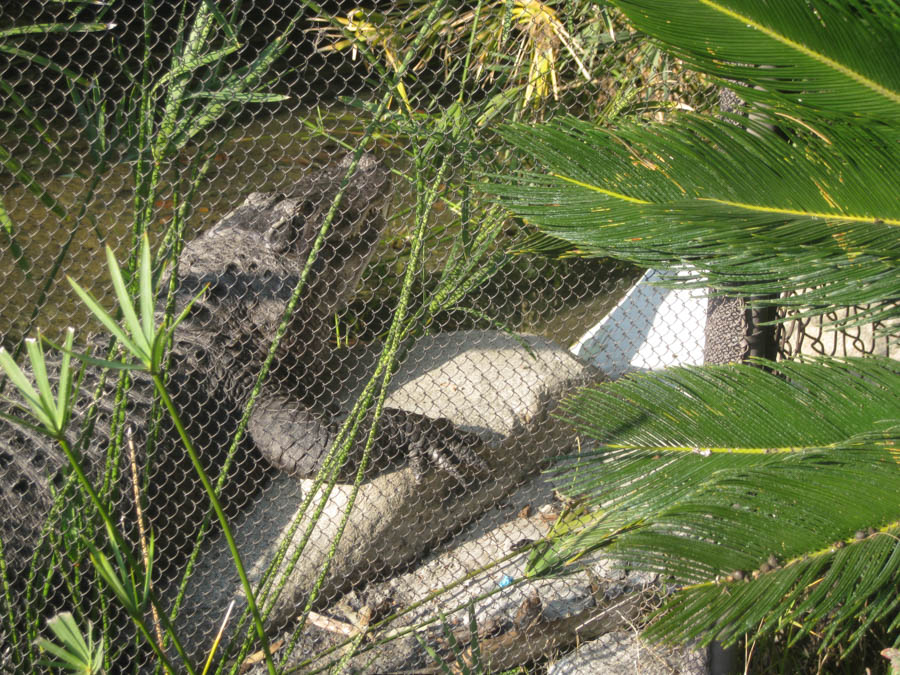
Reggie the alligator welcomed us (eventhough he was asleep)

Meerkats were on duty!

Paul is third from the left...
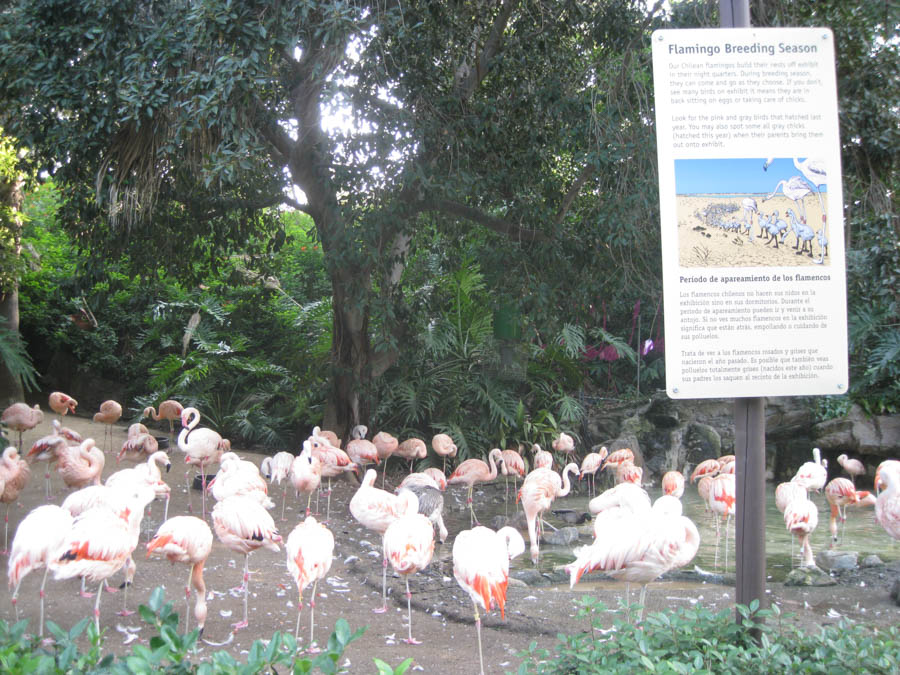
The flamingos were pretty but stinky today
Did You Know? - #1 Flamingos are found in warm, shallow and watery regions of many continents. Their vast habitats include estuaries and saline or alkaline lakes in Africa, Asia, North America, Central America, South America, and Europe.
#2 These highly adaptable birds can live in hot volcanic lakes, as well as in icy lakes of the Andean mountains.
#3 Their beautiful color comes from the algae, diatoms, and small crustaceans that they eat, which are rich in the carotene pigment.
#4 Their interesting feeding technique involves stirring up the mud and water with their long legs and webbed feet. They then bury their bills, or even their entire heads upside down in the water, and suck up both mud and water. They shake their head from side to side to expel the excess mud and water, hold back and eat the plankton, tiny fish and fly larvae. When feeding, flamingos hold their breath.
#5 They are commonly witnessed preening, which takes up a considerable amount of time everyday. They preen using their bills to spread oil from a gland near the base of their tail through their feathers.
#6 Contrary to their appearance, these are surprisingly fluid swimmers. Their webbed toes help them swim and stand in soft mud. However, they don't swim unless the water is too deep to waddle in.
#7 They live in groups referred to as flocks or colonies. The large numbers provide safety against predators (flamingos have a few natural predators), especially while they feed with their heads underwater. They also don't nest unless there are other flamingos around.
#8 They share equal responsibility in parenting. Both the male and female pile up mud to build a nest in which the female lays one egg. After about 30 days of incubating, which is done in turns, the egg hatches to produce a chick with gray or white plumage.
#9 Both parents regurgitate food which is fed to the baby, and both mother and father secrete a milk-like substance that provides their young with proper nourishment. This goes on till the baby's beak is fully developed and is capable of hunting for its own food.
#10 A flock of flamingos taking off is a truly magnificent sight. They gather speed by running prior to taking off and flap their wings almost constantly during flight. A flock can reach to a speed of 31 to 37 mph.
#11 In recent times, changes in flamingo migration patterns have been witnessed due to environmental changes and global warming. These birds easily travel long distances and can cover over 300 miles at a stretch in a single night.
#12 The lifespan of these birds is somewhere between 20 - 30 years in the wild, though these may live up to 50 years in captivity.
#13 A total of six species of flamingos have been identified, namely, Greater Flamingo, Lesser Flamingo, James's Flamingo, Andean Flamingo, Chilean Flamingo and Caribbean Flamingo.
#14 Greater Flamingos are largest of all the species and can grow up to 5 feet tall, whereas Lesser Flamingos are the smallest attaining a height of about 3 feet.
#15 Resting on one leg is a technique which these birds have adopted to minimize the loss of body heat to cold water of shallows.
#16 In some areas, flamingo fat is considered to be a treatment option for tuberculosis.
#17 The long and slender neck of a flamingo consists a total of 19 bones.
#18 Keratin, a very tough substance, is the major structural material of the beak and feathers of these birds.
#19 These birds are often seen producing different vocalizations ranging from growling, honking and grunting.
#20 The Andean Flamingo is categorized as vulnerable species by the International Union for the Conservation of Nature (IUCN), with figures showing only 30,000 of them alive in the wild.
#21 Females lay only one egg per year and do not lay another one if, by any chance, the egg suffers damage.
#22 Flamingos are defenseless creatures which do not fight back and simply fly away when they feel threatened.
#23 These have a good eyesight and color perception, a good hearing ability, but have a poor sense of smell and taste.
#24 As observed in the Philadelphia zoo, these birds display group activities with hundreds of birds participating together. Group displays like "wing salutes", "head-flagging" and "marching" are a measure to regulate hormonal cycling for the mating season.
#25 Lesser Flamingos found in East Africa form the largest flocks of birds with greater than one million of them flocking together.

Other flamingos seemed not to be afraid of us???
About The Hippo's
The Los Angeles Zoo's female hippopotamus, Mara, went into labor at 1:00 p.m. on Friday afternoon and gave birth to a healthy calf two and a half hours later. Guests who happened to stop by to view Mara and her companion, Adhama, received the special Halloween treat of witnessing a live hippo birth. This is the first hippopotamus calf the Zoo has had in 26 years.
Mara, 10 years old, arrived at the L.A. Zoo from Topeka Zoo in December 2013 as a companion for our male, Adhama, 3 years old, who came from the San Diego Zoo in June 2013. This was the first time in many years the Zoo had introduced a pair of hippos, and they had an immediate connection.
Since breeding is closely monitored to comply with the Species Survival Program (SSP) and Mara was on birth control, the birth came as a happy surprise but wasn't completely unexpected. Animal care staff had a hunch a birth was imminent due to Mara's symptoms such as weight gain, but they had limited testing options to confirm the suspicion. Staff referenced their breeding notes, and guesstimated that a birth could potentially happen in mid-November based on a gestation period of eight months for hippo pregnancies.
We Arrived Just At The Right Time
We figured at this young age, the baby would be in an enclosure protected by its mommy. Wow were we surprised. The baby was very active today. She ran all around the enclosure and jumped in the water several times.



Hereed she is!
Did You Know? - The common hippopotamus (Hippopotamus amphibius), or hippo, is a large, mostly herbivorous mammal in sub-Saharan Africa, and one of only two extant species in the family Hippopotamidae, the other being the pygmy hippopotamus

The baby stays close to mama
Did You Know? - The name comes from the ancient Greek for "river horse" (ἱπποπόταμος). After the elephant and rhinoceros, the common hippopotamus is the third-largest type of land mammal and the heaviest extant artiodactyl.
Despite their physical resemblance to pigs and other terrestrial even-toed ungulates, their closest living relatives are cetaceans (whales, porpoises, etc.) from which they diverged about 55 million years ago.
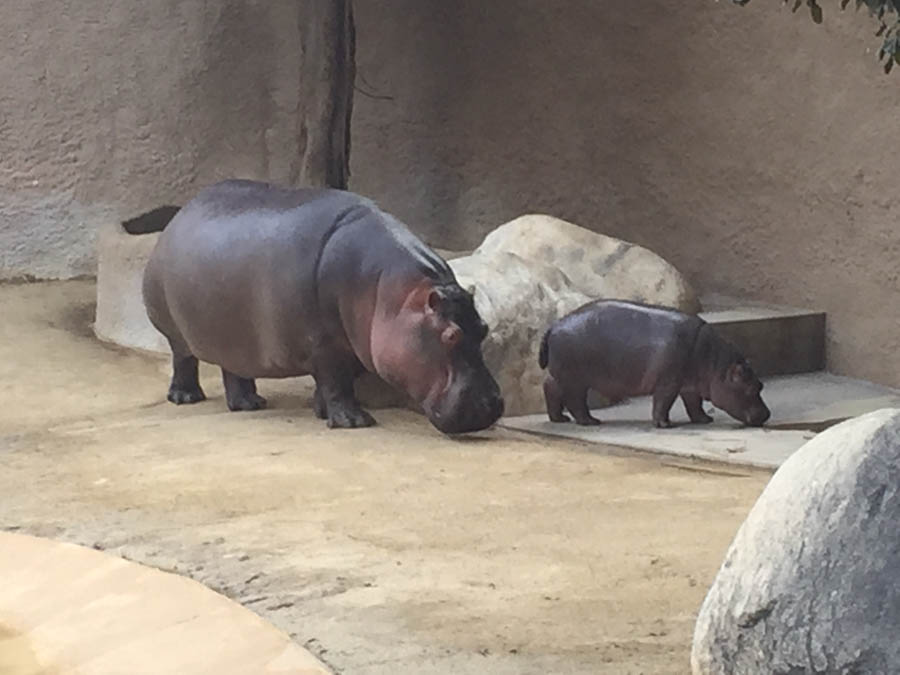
"Follow me mom!"
Did You Know? - The common ancestor of whales and hippos split from other even-toed ungulates around 60 million years ago. The earliest known hippopotamus fossils, belonging to the genus Kenyapotamus in Africa, date to around 16 million years ago.
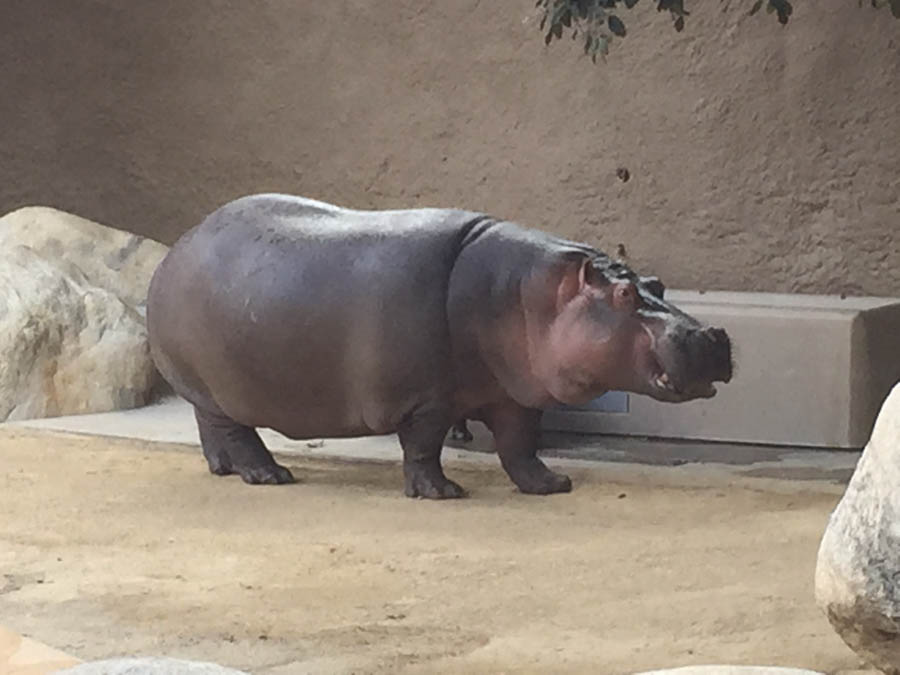
"Get back here you little rascal!"


The water was not very clean but on purpose!

"Aw Mom... Do I have to go into the water?"

"Mom... Do you think I can outrun those people watching me?"
Did You Know? - Common hippos are recognizable by their barrel-shaped torsos, wide-opening mouths revealing large canine tusks, nearly hairless bodies, columnar-like legs and large size.
They are the third-largest type of land mammal by weight (between 1½ and 3 tonnes): the only heavier species on average are the white and Indian rhinoceroses, and the elephants.
The hippopotamus is one of the largest quadrupeds and, despite its stocky shape and short legs, it can easily outrun a human. Hippos have been recorded as running at 30 km/h (19 mph) over short distances.

"Mom! Will I get to your size??"
Did You Know? - The hippopotamus is a highly aggressive and unpredictable animal and is ranked among the most dangerous animals in Africa.
Nevertheless, they are still threatened by habitat loss and poaching for their meat and ivory canine teeth

"OK... I am a water-horse... I can do this!"

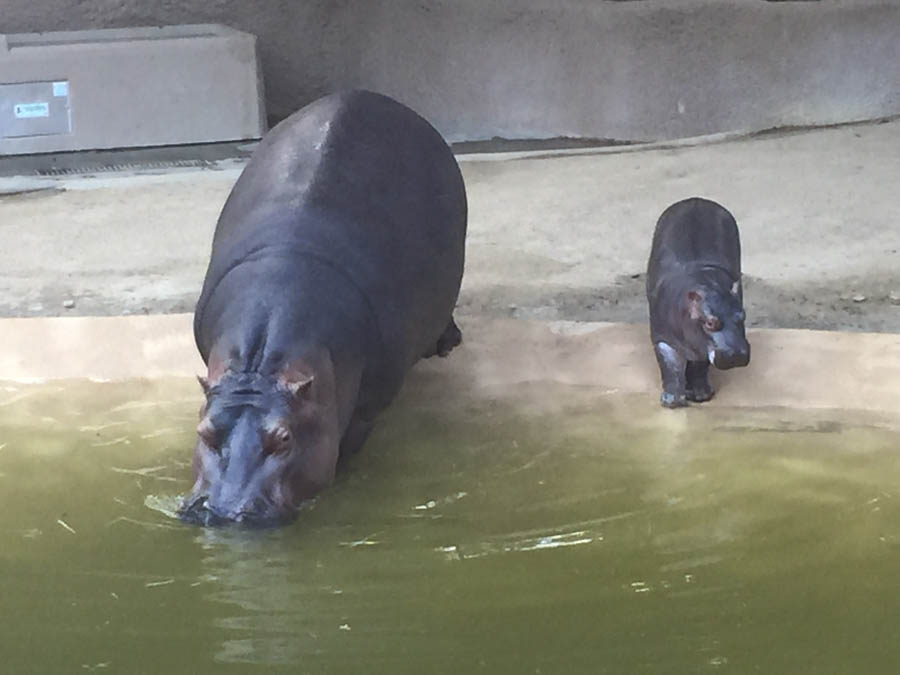
"You first!"
Did You Know? - One young is born at a time, after a gestation of around 230 days. Births usually occur in months of heavy rainfall, but can occur year-round. Young hippos will also bask on their mother's back. A group of hippos is called a "bloat."
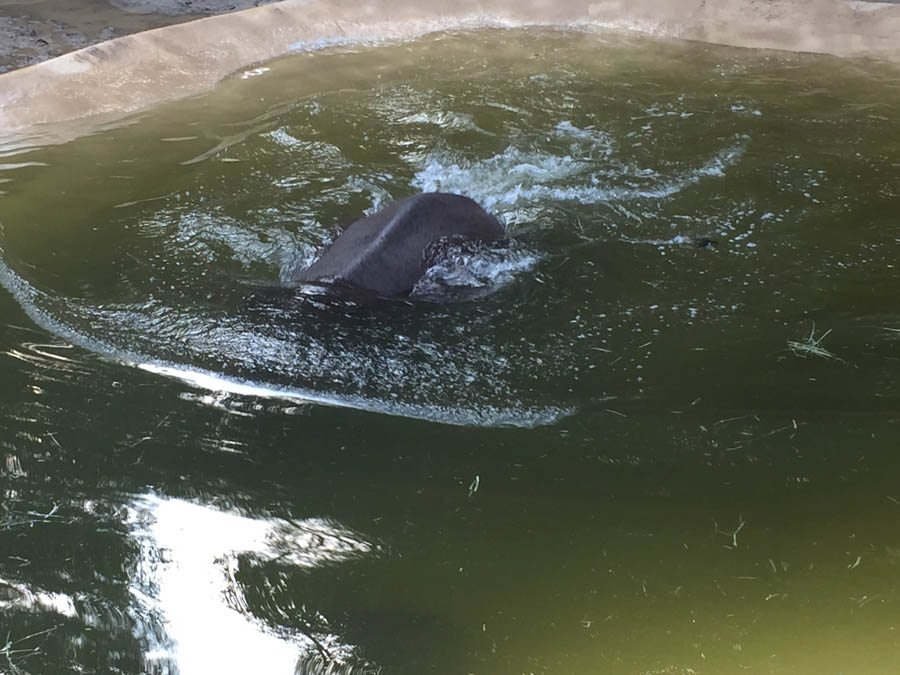
"Come on in... The water is fine!"
Did You Know? - The common hippopotamus is semiaquatic, inhabiting rivers, lakes and mangrove swamps, where territorial bulls preside over a stretch of river and groups of five to 30 females and young.
During the day, they remain cool by staying in the water or mud; reproduction and childbirth both occur in water. They emerge at dusk to graze on grasses. While hippopotamuses rest near each other in the water, grazing is a solitary activity and hippos are not territorial on land.
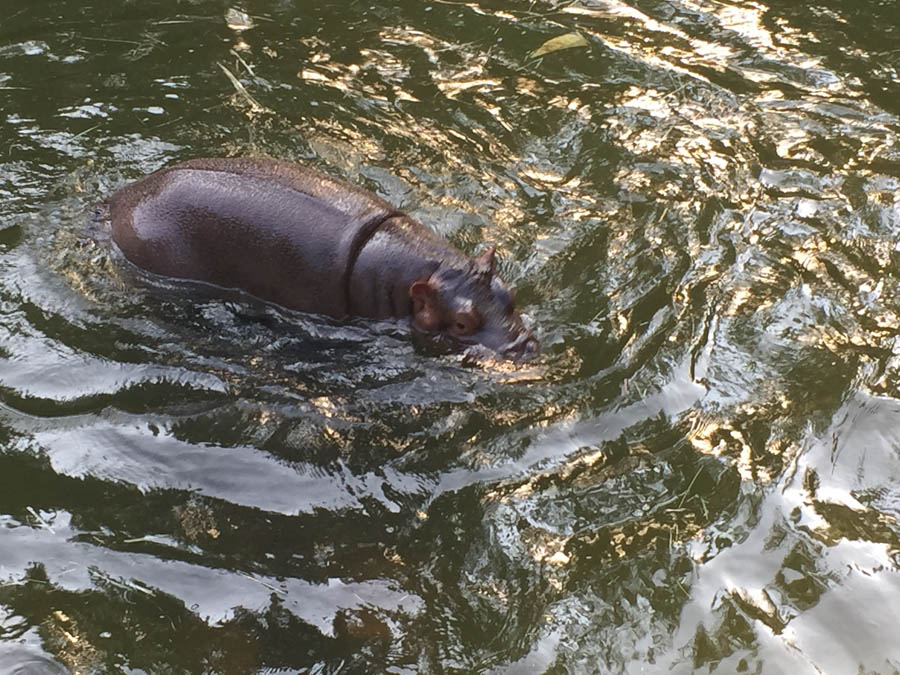
Looks like the Jungle Ride at Disneyland
Did You Know? - The tusk-like incisors and canines grow continuously. They are ivory, valued even more highly than an elephant's because they do not turn yellow with age. George Washington's false teeth were not made of wood, as is commonly believed, but were carved from the tusks of a hippopotamus.
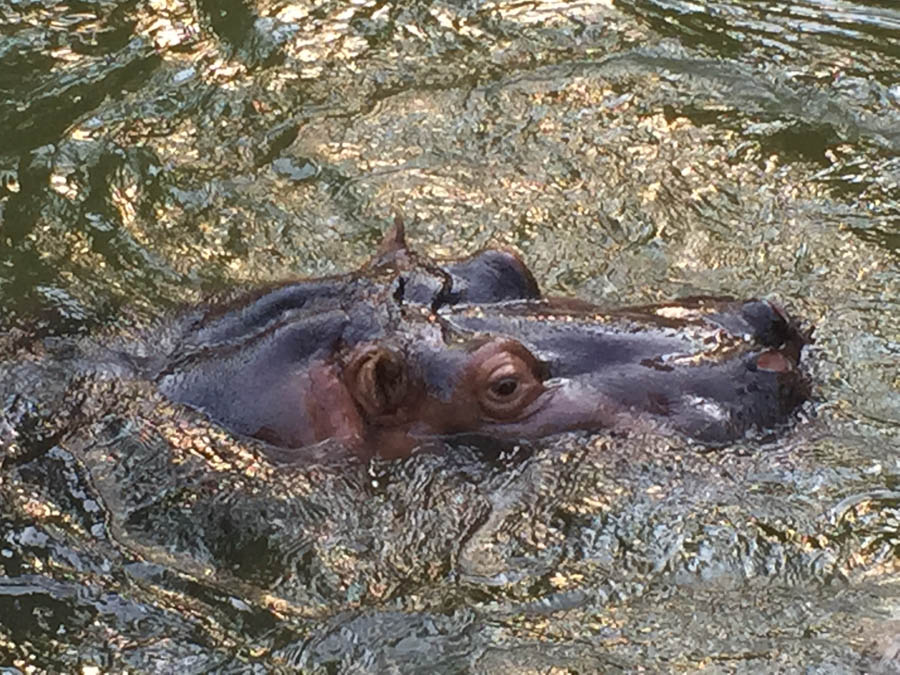
"Come on in and swim with me!"
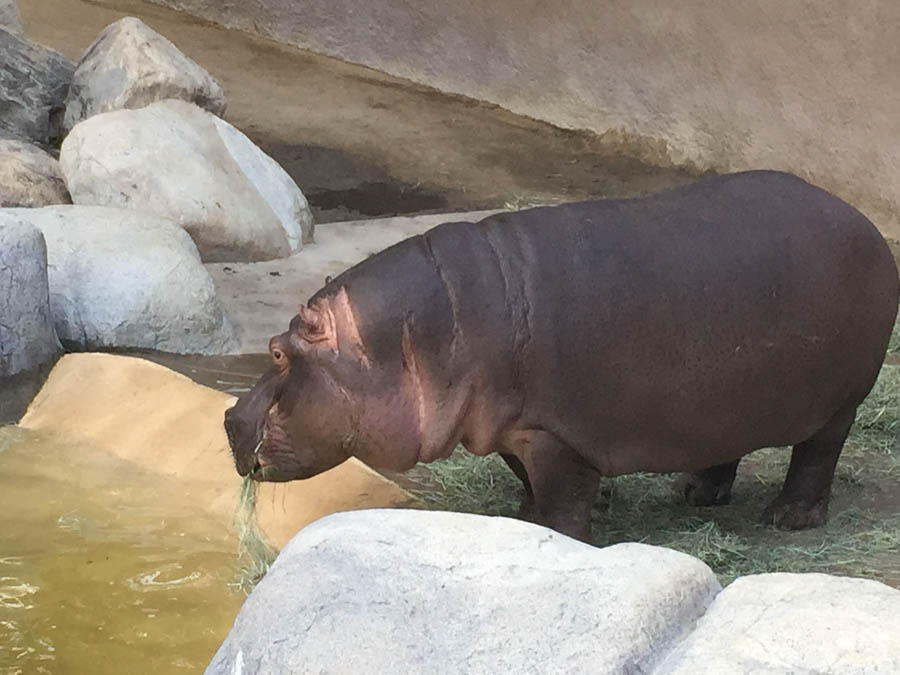
Dad just eats and watches what is going on
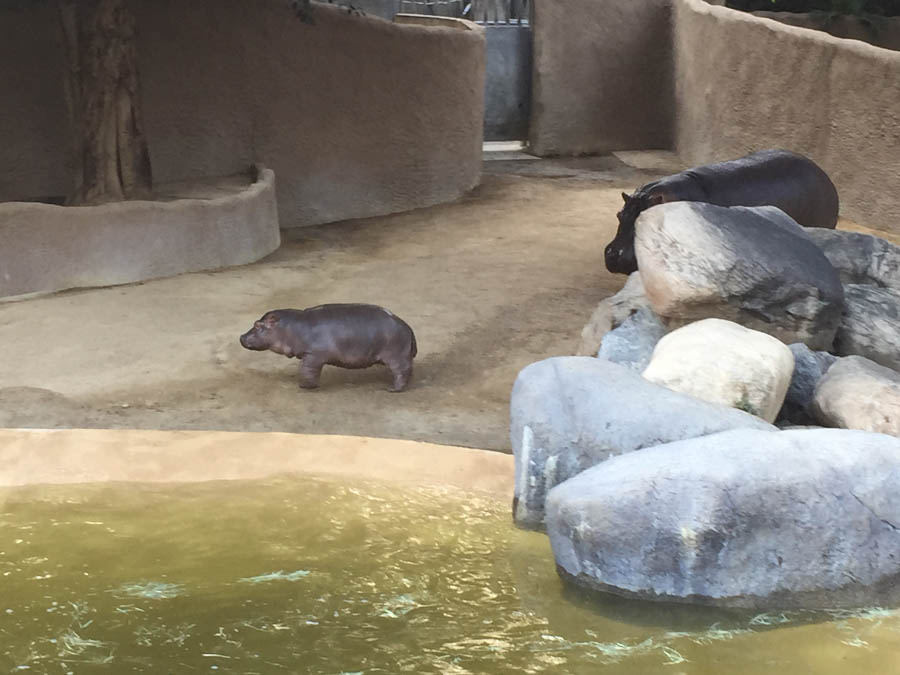
"I want to dive off"
Did You Know? - Until 1909, naturalists grouped hippos with pigs, based on molar patterns. Several lines of evidence, first from blood proteins, then from molecular systematics and DNA and the fossil record, show that their closest living relatives are cetaceans – whales, dolphins and porpoises.

"Look... I am faster that a speeding bullet... I am doing 19 mph!"
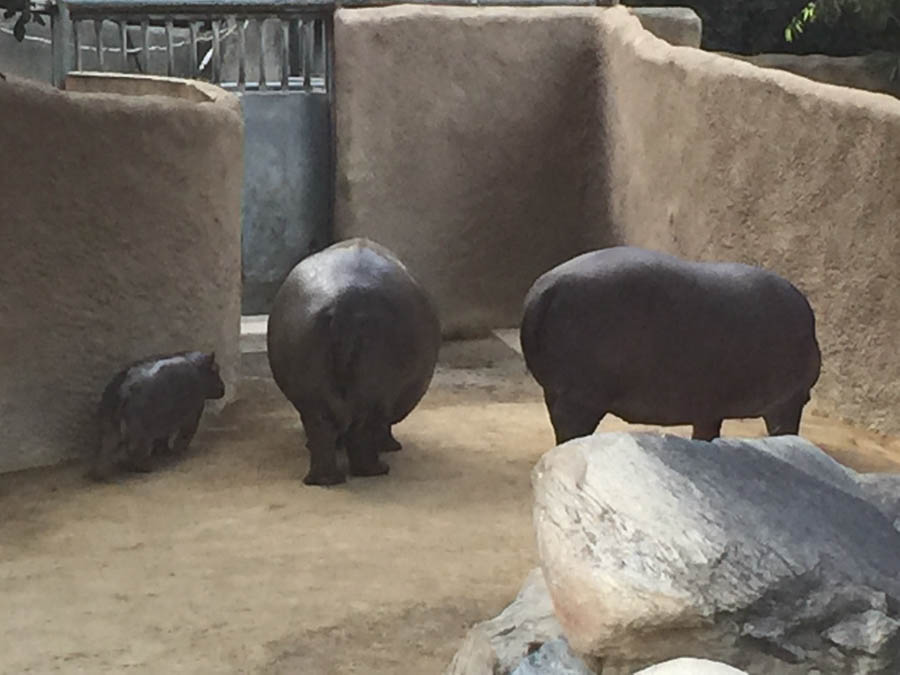
Cute family

The mouth is indeed flip top

Chomp
Did You Know? - Despite being semiaquatic and having webbed feet, an adult hippo is not a particularly good swimmer nor can it float. It is rarely found in deep water; when it is, the animal moves by porpoise-like leaps from the bottom.
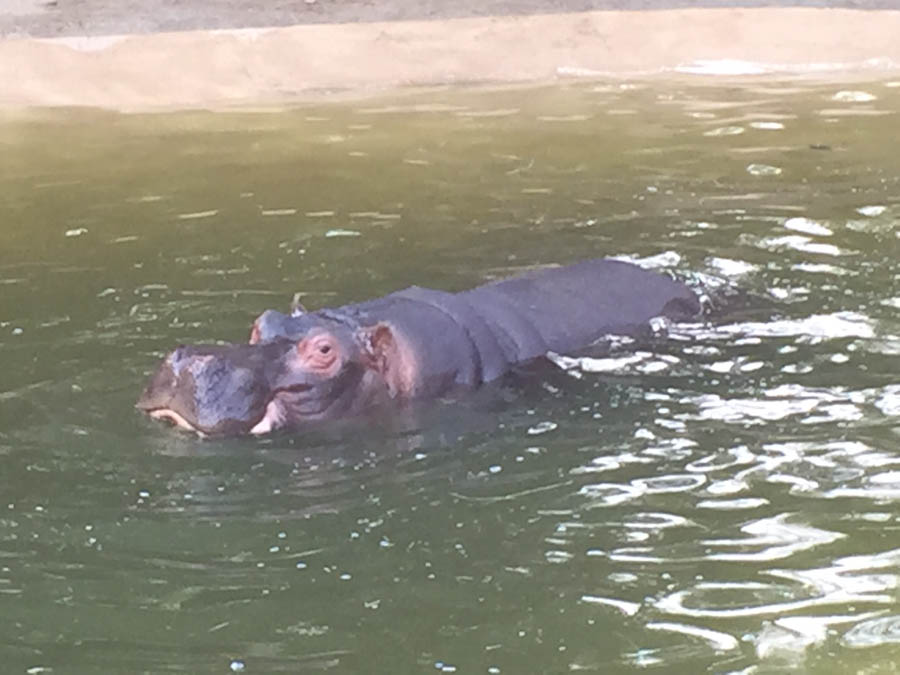
"I am keeping my eyes on you!"

The Zoo grounds are kept quite nice

Sue peers over the guard rail

We Continued Looking Around The Zoo On Our Way Out

Indeed mountain goats


The tiger was quite active
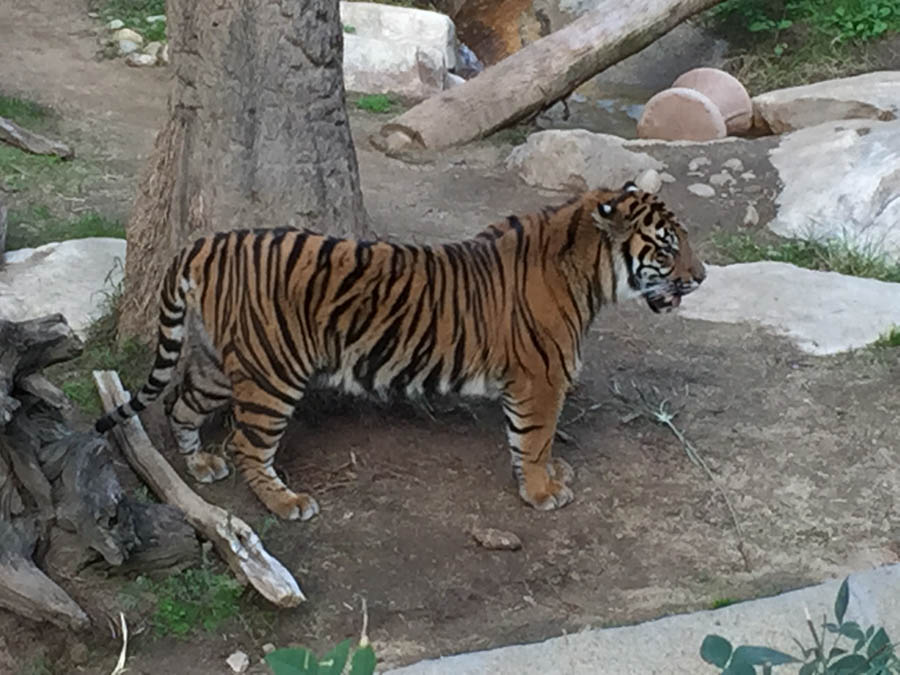
A beautiful animal
Time To Monkey Around

The zoo recently welcomed two male baby chimpanzees to the troop at Chimpanzees of the Mahale Mountains, which now includes five endangered chimp babies under the age of three years old.

"Watching the people watch me"
Did You Know? - Chimpanzees are members of the family Hominidae, along with humans, gorillas, and orangutans. Chimpanzees split from the human branch of the family about four to six million years ago. Chimpanzees are the closest living relatives to humans, being members of the tribe Hominini (along with extinct species of subtribe Hominina).
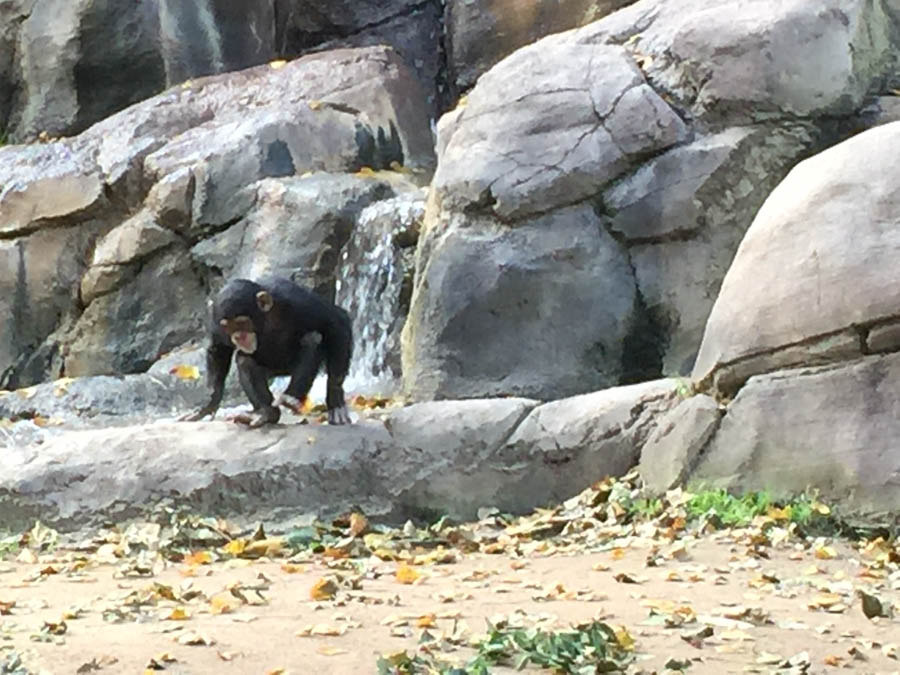
"Can I make this big jump?"
Did You Know? - The word "chimpanzee" comes from the Bantu words 'Tshiluba Kivili-Chimpenze' which loosely translates to "creature that looks something like a human"
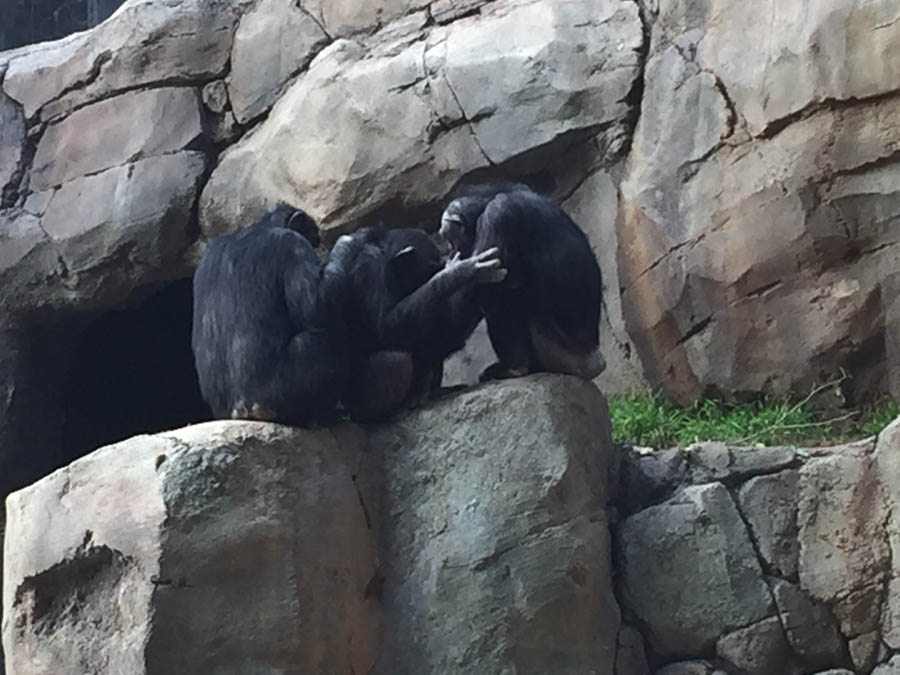
"The baby is pretty funny"
Did You Know? - Chimpanzees make tools and use them to acquire foods and for social displays; they have sophisticated hunting strategies requiring cooperation, influence and rank; they are status conscious, manipulative and capable of deception; they can learn to use symbols and understand aspects of human language including some relational syntax, concepts of number and numerical sequence; and they are capable of spontaneous planning for a future state or event.
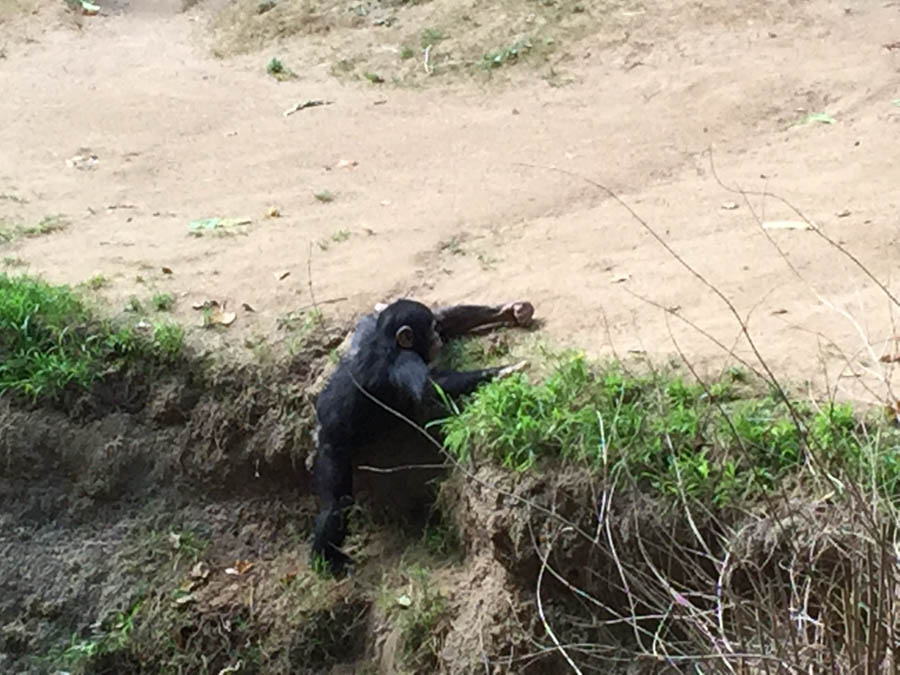
"I can do it"
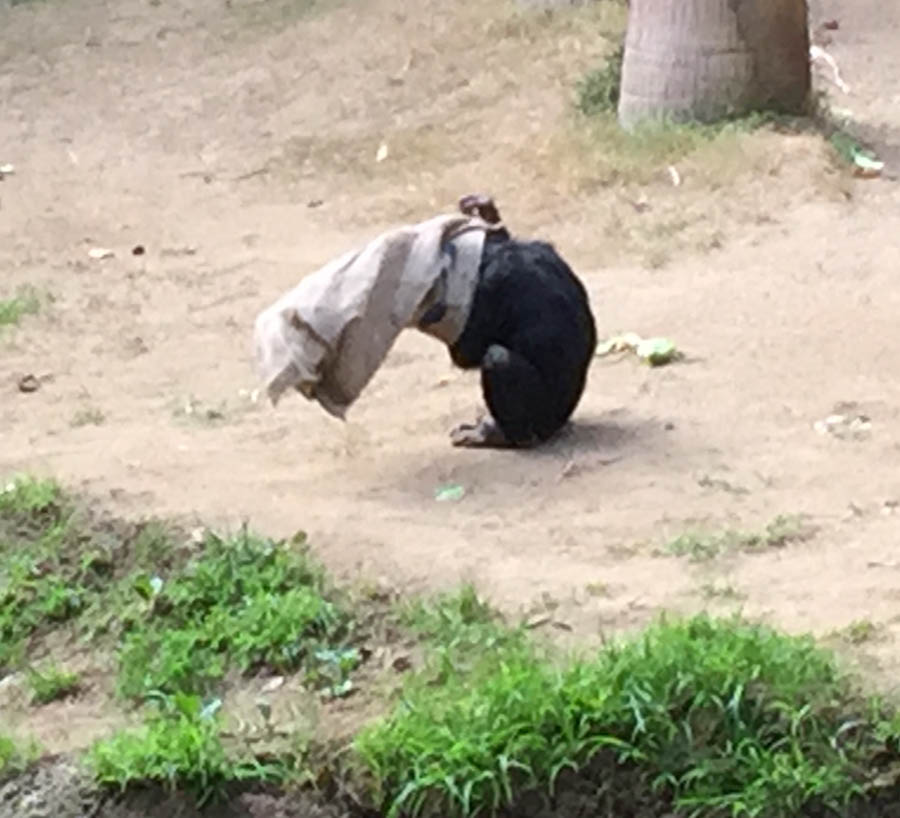
"I wonder what it's on the inside of this bag?"

"Nothing. That's no fun!"
We Continued To The Giraffes And Elephants


The giraffe appeared to be hungry. Someone grab a plant and stuck it in his direction and he came over and started chewing.
Did You Know? - Male giraffes of the Serengeti can indeed reach 20 feet in height, although most are around 15-17 feet. Females tend to be around 12-15 feet.
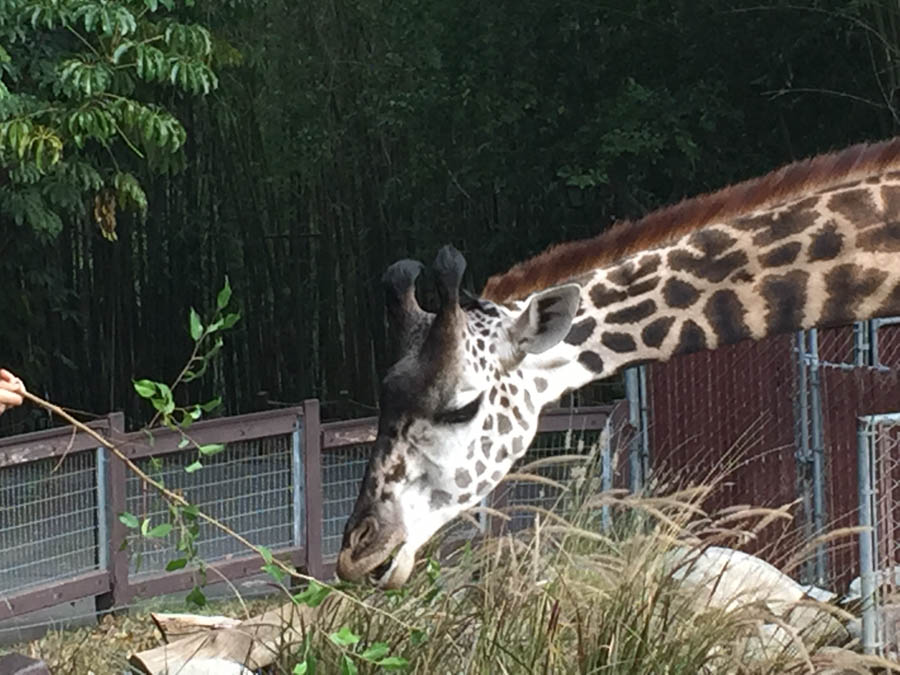
"Hey that is pretty good stuff. Do you have anymore? "
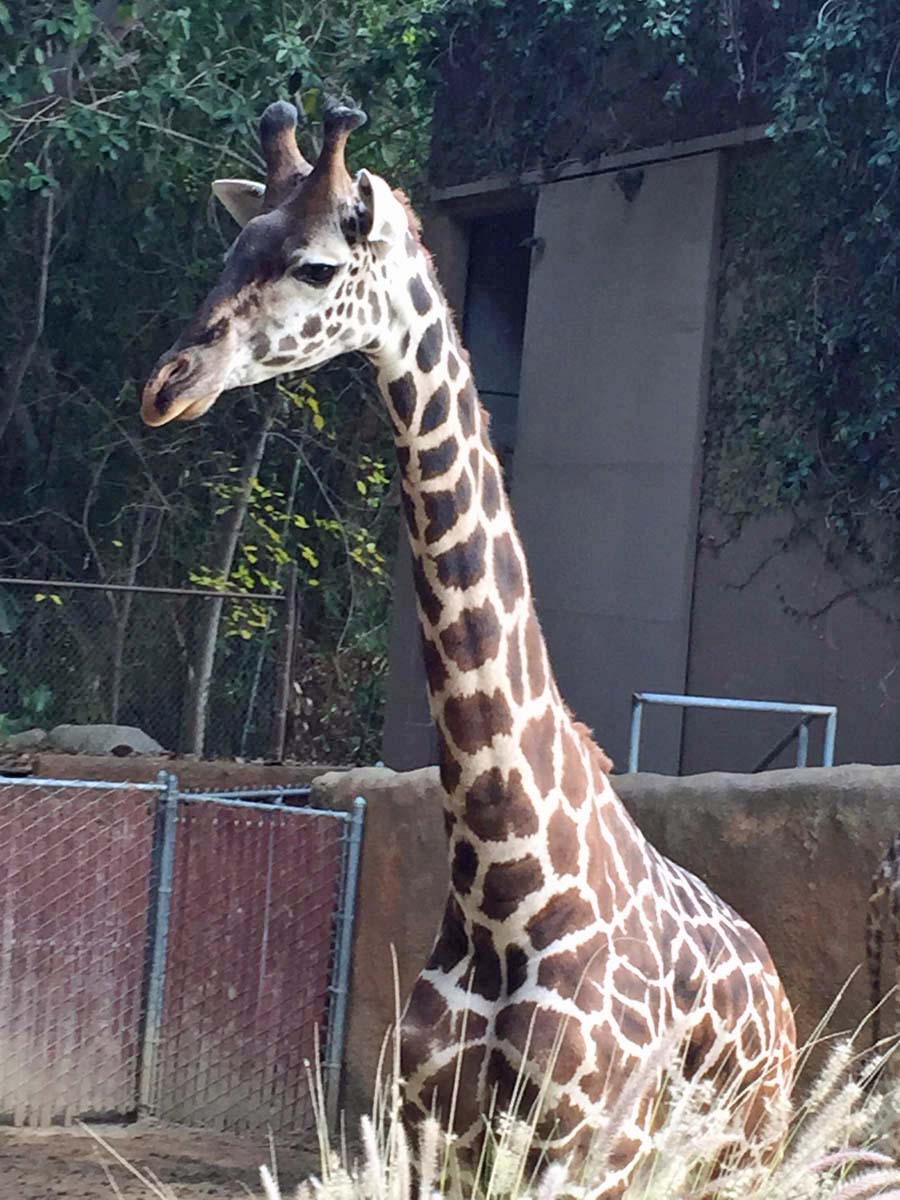
"The view is fantastic from way up here"
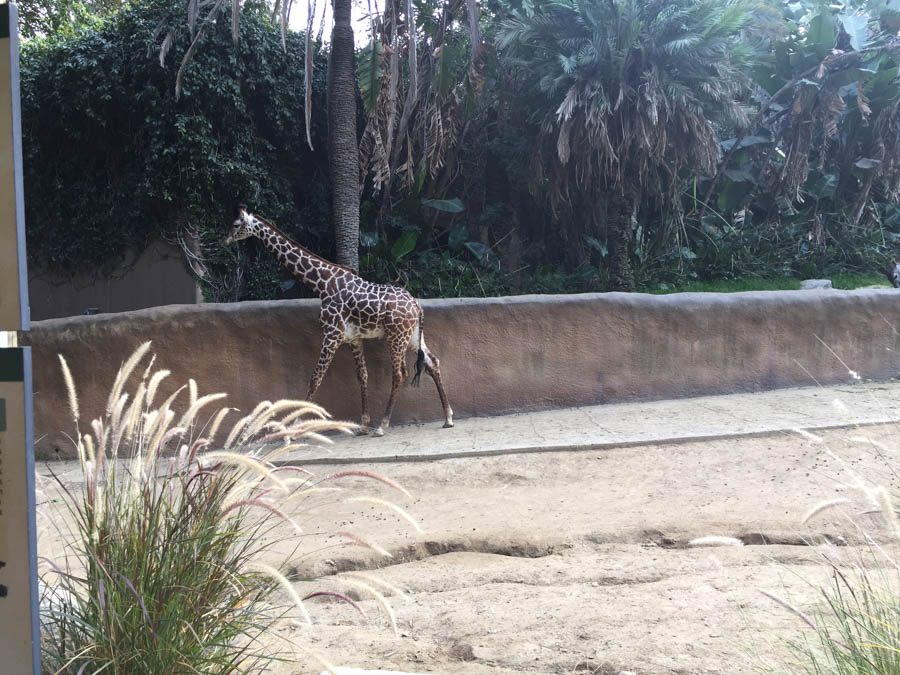
"Excuse me for a minute but I must exercise after eating all those leaves"

The elephants were quite active this afternoon!
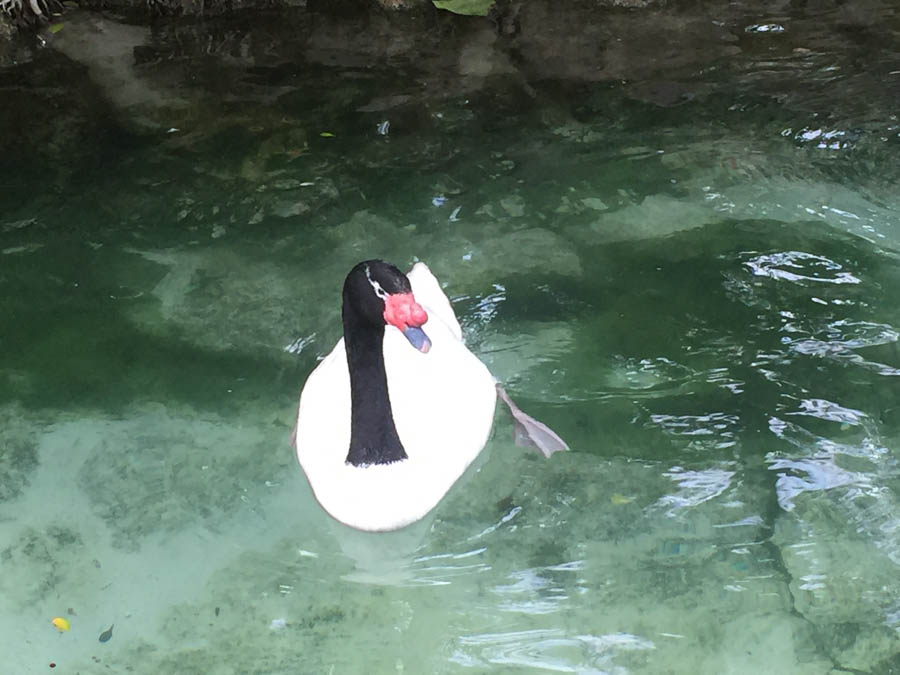
One swan a swimming!

The two swans were really enjoying themselves

We were waiting for the swans to bite the wire and see what would happen. They didn't do it so we guess they know what it means.

Hello Mr. Lion

We needed a glass of wine for the trip home.
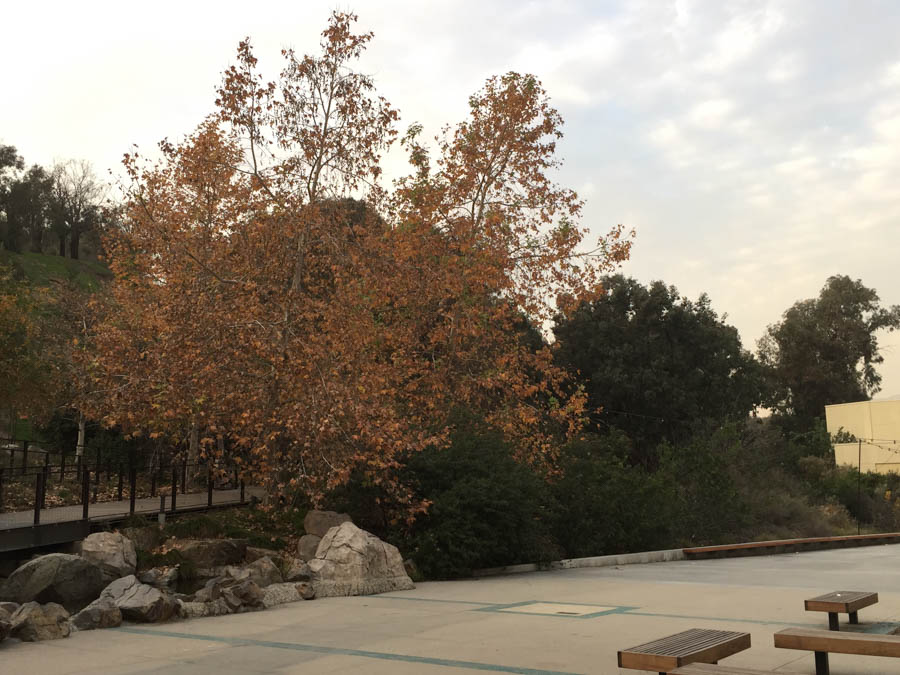
It was indeed winter time. Many of the trees were quite brown.